The Legacy of Zelda Games on GameCube Unveiled
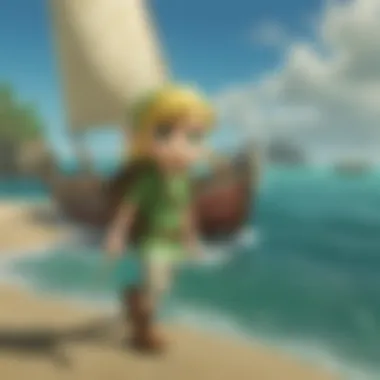
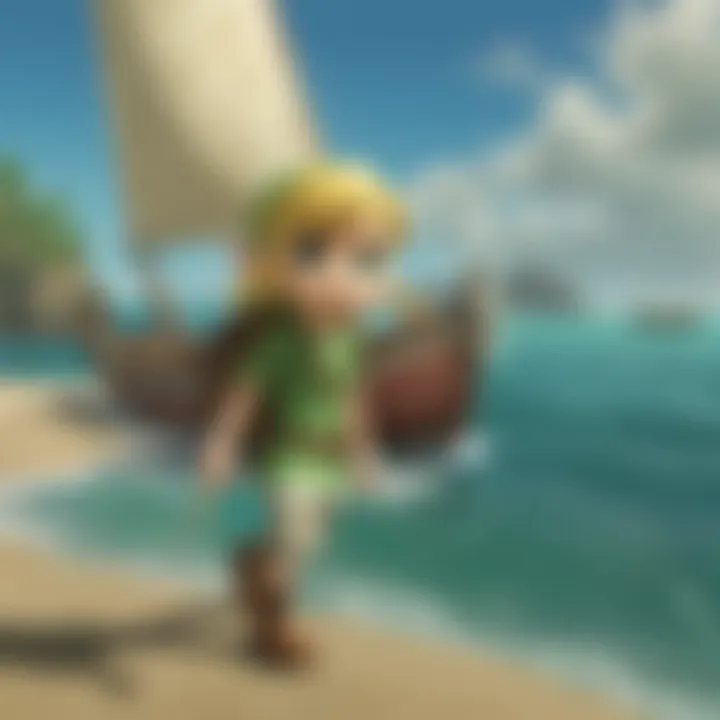
Intro
The release of the Nintendo GameCube marked a pivotal moment in gaming, presenting a fresh opportunity for exploring beloved franchises. Among these, the Zelda series stood out, delivering adventures that resonated deeply with fans. Specifically, this console introduced two significant titles: The Legend of Zelda: The Wind Waker and The Legend of Zelda: Four Swords Adventures.
Exploring these games provides insights into their unique contributions to the franchise, the game mechanics, and the impact they left on players and the broader gaming landscape. Throughout this article, we will delve into the gameplay, character dynamics, and the lore surrounding these titles, offering a comprehensive overview of how Hyrule was presented on the GameCube.
Game Reviews
Gameplay Features and Mechanics
Both The Wind Waker and Four Swords Adventures showcased innovative gameplay mechanics that distinguished them in the Zelda series.
The Wind Waker, with its cel-shaded graphic style, introduced players to a vast oceanic world. Sailing not only became a means of travel but also an integral part of the game's exploration. Players navigated between islands, uncovering secrets and engaging in combat. The wind-themed mechanics, where players could manipulate the wind direction, added a layer of strategy, making exploration dynamic and rewarding.
On the other hand, Four Swords Adventures shifted the focus to multiplayer gameplay. Up to four players could control different Links, tackling challenges cooperatively. This game leveraged teamwork and communication, creating a unique experience within the Zelda universe.
Storyline and Quests
The Wind Waker presents a narrative rich in exploration and discovery. Set in a world flooded by the Great Flood, the story emphasizes themes of growth, courage, and the importance of family. Players accompany Link on a quest to rescue his sister, ultimately confronting the antagonist, Ganon. The quest structure involved various islands, each holding quests that revealed the lore of Hyrule and its history.
Conversely, Four Swords Adventures focuses on a more lighthearted narrative, revolving around the battle against the evil sorcerer Vaati. The quests are structured around levels, which encourage replayability, with varied objectives ensuring that challenges remain engaging.
Visuals and Sound Design
The Wind Waker's distinct art style reflects a departure from prior entries. The cel-shading allowed for vibrant colors and expressive character designs that enhanced the storytelling. The soundtrack, composed by Kota Suzuki, aligns perfectly with the adventurous tone, featuring memorable tunes that evoke emotion. Four Swords Adventures, while visually similar, employs a more traditional design. However, its sound design incorporates both nostalgic themes from previous games while also introducing new compositions, ensuring a cohesive auditory experience for long-time fans.
Comparison with Previous Titles
When compared to Ocarina of Time and Majora's Mask, both GameCube titles offer a different approach. The Wind Waker diverges from the somber tone of earlier games, emphasizing exploration and lighthearted adventure. In contrast, Four Swords Adventures is a fresh multiplayer experience, breaking with the single-player norms that defined the series.
"The distinctive styles and mechanics of the GameCube Zelda titles redefined what players expected from an adventure. Each title built on the legacy while steering the franchise into new territories."
Character Analyses
Popular Characters Overview
Both titles introduce myriad characters, key among them is Link, the series' protagonist. Each iteration of Link showcases different aspects of his character, with The Wind Waker presenting a youthful, vibrant version while Four Swords Adventures offers a more varied cast of Links through multiplayer dynamics. Other vital characters include Zelda, who plays a crucial role despite being less directly involved in gameplay, and antagonists like Ganon and Vaati, whose motives drive the plot.
Character Development and Backstories
In The Wind Waker, Link's development centers around his journey to save his sister and grow into a hero. His relationship with Tetra, who later reveals her identity as Princess Zelda, adds depth to the narrative, merging past and present in Hyrule’s legacy. In Four Swords Adventures, the focus shifts more towards teamwork. Character development occurs through interaction with multiple Links, showcasing different strengths, weaknesses, and personalities.
Role in the Zelda Universe
Link's role as the hero remains a constant, yet these titles expand on his relevance through unique challenges. Zelda, while often a damsel in distress, demonstrates her own strength, particularly through Tetra, who embodies courage and leadership. Meanwhile, Ganon and Vaati illustrate classic villain archetypes, yet each reflects distinct motivations and complexity.
Fan Theories and Speculations
The Zelda community has thrived on theory crafting regarding character relations and timelines. Discussions about how The Wind Waker's timeline connects to previous titles have led to varied interpretations, questioning the implications of Hyrule’s evolution. Similarly, fans speculate about the nature of the Links in Four Swords Adventures—are they different incarnations or facets of the same hero?
Lore Discussions
Mythology and Worldbuilding
The Zelda series thrives on rich lore, and the GameCube titles significantly contribute to this tapestry. The Wind Waker adds layers to Hyrule's mythology through its backstory, detailing the catastrophic events that led to the Great Flood. The world feels alive, populated by history and mythology that players progressively uncover.
Legendary Items and Artifacts
Throughout both games, legendary items play critical roles. In The Wind Waker, the Master Sword is a central artifact, showcasing the series' enduring themes of power and responsibility. On the flip side, Four Swords Adventures emphasizes the Four Sword, presenting a narrative of unity through division, encouraging cooperative gameplay.
Link to Real-world Mythologies
The Zelda series has frequently drawn inspiration from various mythologies and cultural elements. Both GameCube entries emphasize themes of heroism, sacrifice, and the cyclical nature of time and power. Players often find familiarity in these motifs, enhancing their engagement with the lore.
Timeline Placement and Theories
Within the broader Zelda timeline, these titles occupy unique positions. Discussions about where The Wind Waker fits, especially concerning earlier adventures, remain ongoing in community forums. Fans dissect every detail, delving deep into the implications of Hyrule evolving over time.
Gameplay Strategies
Combat Techniques and Tips
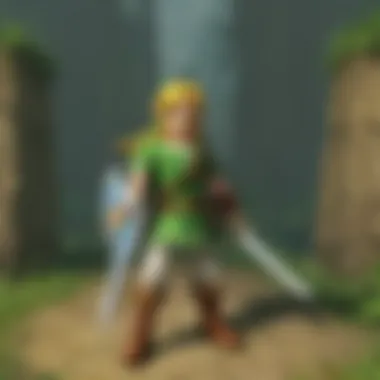
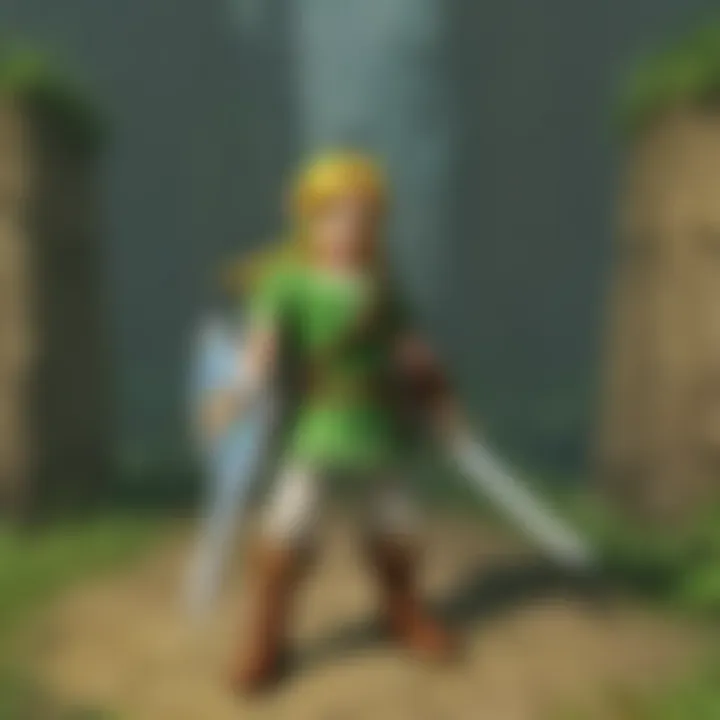
Combat in The Wind Waker emphasizes timing and strategic use of items. Players often find success where they exploit enemy weaknesses using the environment, such as utilizing clever attacks to thwart foes. Learning enemy patterns proves vital for survival. Four Swords Adventures requires adaptability; understanding the diverse abilities of each Link enhances cooperative strategies, making team coordination essential in overcoming obstacles.
Puzzle Solutions and Walkthroughs
Both games feature intricate puzzles that demand critical thinking. The Wind Waker incorporates environment-based puzzles, focusing on exploration and items like the Grappling Hook. In Four Swords Adventures, multiplayer puzzles require active collaboration to succeed, often relying on coordination among players to navigate obstacles effectively.
Collectibles and Side Quest Guides
Collectibles in The Wind Waker are underpinned by exploration. Finding Treasure Charts and collecting Golden Feathers enriches the gameplay, offering rewards and enhancing the overall experience. Conversely, Four Swords Adventures offers side quests focused on mastering each level, encouraging players to explore each stage thoroughly.
Boss Battles Tactics and Strategies
Boss encounters in The Wind Waker require smart utilization of weapons and tools. Each battle typically involves recognizing patterns. In Four Swords Adventures, coordinating as a team allows for seamless multi-attack strategies, making the fights engaging as players make use of each Hero's abilities.
Each title on the GameCube contributed distinctively to the Zelda legacy, providing valuable experiences resonating with various audiences. Examining these games not only reflects their significance during an important era for Nintendo but also acknowledges their lasting influence on future entries in the series.
Prolusion to Zelda on GameCube
The presence of the Zelda series on the GameCube marks a noteworthy chapter in gaming history. The Nintendo GameCube offered a unique platform that allowed the franchise to evolve in both storytelling and gameplay. This section highlights how these games expanded the boundaries of the universe, promoting new mechanics and experiences for players. The exploration here will set the stage for understanding two major titles: The Wind Waker and Four Swords Adventures. Their significance extends beyond mere gameplay; they reflect industry trends and fan expectations, demonstrating the series' ability to adapt.
The Evolution of the Zelda Series
Since its inception, the Zelda series has continuously embraced creativity. Each installment introduced new elements that kept the narrative fresh and engaging. The shift onto the GameCube represents a pivot both in visual style and in gameplay mechanics. The technology available during this time allowed for more detailed graphics and richer worlds, compelling gameplay innovations, and a more immersive narrative. Titles like Ocarina of Time set a high bar, and the subsequent Majora's Mask showcased darker themes. The successes of these predecessors influenced how Zelda approached the GameCube.
When The Wind Waker was first unveiled, its cel-shaded art style sparked debates among fans. Many appreciated the departure from the traditionally realistic aesthetics of earlier games. This shift indicated a significant evolution in the franchise; the visual choices lent themselves well to themes of exploration. Moreover, Four Swords Adventures introduced multiplayer gameplay, allowing friends to navigate Hyrule together, a first for the series.
The evolution of the Zelda series shows a constant willingness to experiment and reinvent. Each new title on the GameCube serves as testament to the franchise's adaptability, all while maintaining core principles that resonate with its audience.
GameCube's Role in Console Gaming
The GameCube itself occupies a distinctive position in the timeline of console gaming. Released in 2001, it was part of a stiff competition with Sony's PlayStation 2 and Microsoft's Xbox. Yet, its unique design and game library set it apart. The GameCube's miniature discs, robust controller, and emphasis on multiplayer experiences were vital for attracting a diverse player base.
For the Zelda series, the GameCube was a platform that testing the limits of what players expected. The console provided the ability to explore more vibrant worlds than previous generations. The narrative depth that The Wind Waker offered, combined with the fun mechanics of Four Swords Adventures, demonstrated the potential for deeper engagement.
With its compact design, GameCube encouraged social play. Friends could gather to complete quests together, fostering a sense of community. This social aspect was pivotal in highlighting why the Zelda franchise would focus on cooperative experiences during this era. The advancements of the GameCube thus provided a favorable landscape for Zelda to grow in innovative ways.
"The GameCube allowed the Zelda series to explore new narratives, themes, and technology. This period marked a significant turning point in console gaming."
In summary, both the GameCube and the Zelda series played crucial roles in shaping each other during a transformative era. The creative risks taken during this period have had lasting impacts on fans and future game development.
The Legend of Zelda: The Wind Waker
The Legend of Zelda: The Wind Waker holds a significant place in the Zelda franchise, particularly as it represents a bold departure from prior titles in terms of visual design and gameplay approach. Released for the Nintendo GameCube in 2002, it sparked discussions about the direction of the series at a crucial juncture. With its emphasis on exploration and a distinct art style, The Wind Waker remains a touchstone for both new and returning fans of the series. The game encourages players to embark on an adventure through a vast ocean, discovering islands and unraveling the story of Hyrule's fate in a richly painted world.
Concept and Development
The development of The Wind Waker was ambitious from the start. Nintendo's decision to shift from a realistic art style, exemplified in The Legend of Zelda: Ocarina of Time, to a cel-shaded, cartoon-like aesthetic was controversial. Spearheaded by director Eiji Aonuma, the concept was rooted in the desire to create a unique, immersive experience that would invite players to see Hyrule in a different light. The development team took inspiration from classic animation and comics, which was evident in the fluid movements and visual storytelling.
One of the key aspects in development was the introduction of sailing mechanics, which became synonymous with the game. The timeline stretched over several years, with prototypes and design iterations continuously reshaping the vision. As Nintendo navigated through these changes, they ultimately prioritized gameplay fluidity. This focus on dynamic exploration was crucial in making The Wind Waker stand out as a landmark title in the franchise.
Art Style and Graphics
The Wind Waker's art style has been both celebrated and criticized since its launch. Its cel-shaded visuals are vibrant and colorful, infusing the game with a sense of charm and whimsy. This stylistic choice facilitates a narrative that resonates with younger audiences while also appealing to long-time fans of the series.
The character designs reflect this artistic vision, with exaggerated features and expressive animations that enhance storytelling. The environments are richly crafted, featuring intricate details that bring each island to life. The graphical design serves not only to differentiate The Wind Waker from its predecessors but also to create a sense of timelessness. Unlike realistic graphics that can date quickly, The Wind Waker's art style has aged well, allowing players to enjoy its aesthetic even years later.
Gameplay Mechanics
Gameplay in The Wind Waker introduces an innovative sailing system that becomes the backbone of the player experience. Players navigate the seas aboard the King of Red Lions, a talking boat that guides Link on his quest. The vast ocean serves as an expansive playground, encouraging exploration and adventuring on various islands.
Players use a map and navigational tools to uncover new areas, engage with island inhabitants, and tackle dungeons. The game incorporates traditional Zelda mechanics like puzzle-solving and combat but marries these with unique features such as wind direction, which impacts sailing speed and direction. The game also includes a variety of mini-games and challenges that enrich the gameplay and provide diverse experiences.
Narrative and Characters
The narrative of The Wind Waker is a continuation of the saga surrounding the Triforce and the fate of Hyrule. Players meet Link, a young boy who finds himself drawn into a larger conflict involving the villain Ganon. The story is woven with themes of courage, friendship, and legacy as Link journeys across the sea to rescue his sister and save the world from impending doom.
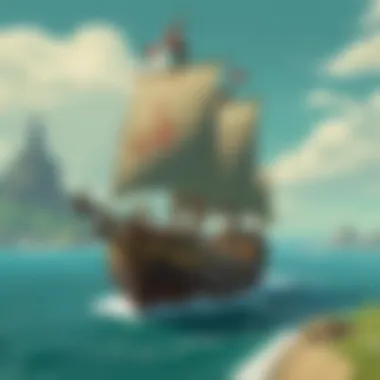
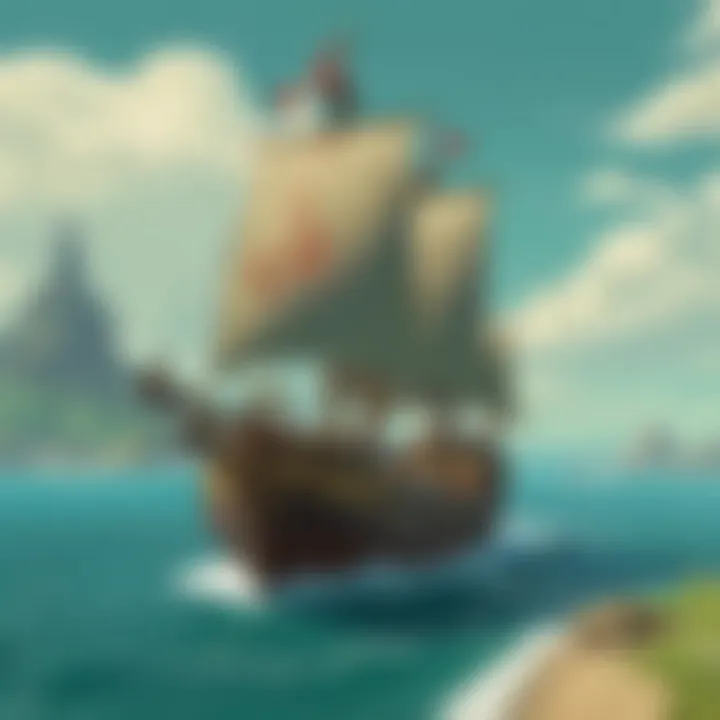
The characters are richly developed and memorable, with fan favorites like Tetra, a fierce pirate, and the reluctant yet wise King of Hyrule. The interplay between characters adds depth to the story, as their motivations and backgrounds are gradually unraveled throughout the gameplay. The use of light-hearted dialogue amidst serious themes creates a balance that enhances player engagement.
Critical Reception
Upon its release, The Wind Waker garnered mixed reviews, primarily due to its visual style. Critics often highlighted the shift in aesthetics as divisive. However, over time, perceptions changed, and many recognized the game for its innovation and charm. Reviewers praised its open-world design, engaging gameplay, and storytelling, noting that it was a defining title for the GameCube.
The Wind Waker not only received several awards but also achieved commercial success. Its influence extends beyond immediate critical reception; it has become a beloved installment in the Zelda franchise, often cited among the best video games in history. The release of The Wind Waker HD for the Wii U in 2013 helped to further cement its legacy, attracting new players while reigniting the passion among long-time fans.
The Legend of Zelda: Four Swords Adventures
The Legend of Zelda: Four Swords Adventures stands out as a unique entry in the Zelda series. Unlike many of its predecessors, this installment emphasizes multiplayer gameplay, a significant aspect that has implications for both game design and player interaction. This focus on multiplayer sets it apart from other titles in the franchise, making it a vital component of the larger discussion on Zelda games on the GameCube.
Foreword to Multiplayer Gameplay
Four Swords Adventures introduces a cooperative multiplayer mechanic that allows up to four players to join forces. Each player controls a different version of Link, and they must collaborate to solve puzzles and defeat enemies. This setup fosters teamwork and communication among players, which is a departure from the traditionally single-player focus of the franchise. The requirement for cooperation makes it challenging, yet rewarding, as players navigate through dungeons and complete objectives together.
Having this multiplayer layer not only enriches gameplay but also offers an extra layer of experience. Friends or family members can join in the fun, bringing a social aspect that enhances engagement with the game. This novelty encourages group strategy, as players must coordinate their actions effectively to progress through obstacles that can often require collective effort.
Game Development Insights
The development of Four Swords Adventures was a notable venture for Nintendo. While the game was built on the established Zelda mechanics, it required unique considerations for its multiplayer framework. The development team made a deliberate choice to focus on the GameCube's capabilities, designing the game around four players simultaneously. This design choice meant that level layouts, puzzles, and enemy encounters had to accommodate multiple Links interacting at the same time.
Additionally, the connectivity aspect was significant. Unlike many other titles that have a singular narrative focus, Four Swords Adventures incorporated the GameCube linking features, allowing for cross-play with the Game Boy Advance. This interconnectivity opened a pathway for players to experience content across multiple devices, a feature that was relatively innovative during its time.
Level Design and Challenges
The levels in Four Swords Adventures are crafted to utilize the multiplayer dynamic fully. Each area is designed with challenges that require collaboration. For instance, some puzzles cannot be solved by one player alone, necessitating teamwork to perform tasks simultaneously. Additionally, some levels introduce varying gameplay mechanics, increasing the level of strategy needed as players must communicate their moves effectively.
"The incorporation of team-based puzzles in Four Swords Adventures presents a refreshing twist in the often solitary experience of previous Zelda games."
This design philosophy impacts how players interact with each other as they encounter challenges. Coordination becomes essential, leading to a unique gameplay experience that can differ significantly from player to player, based on their teamwork effectiveness. Different approaches to problem-solving can result in varied methods of completing levels, adding replay value.
Comparison with The Wind Waker
When comparing Four Swords Adventures to The Wind Waker, several distinctions become evident. The Wind Waker follows a traditional single-player narrative that focuses on exploration and storytelling. In contrast, Four Swords Adventures hinges heavily on multiplayer collaboration and interaction.
The visual styles also diverge. While The Wind Waker is known for its distinctive cel-shaded graphics, Four Swords Adventures offers a more straightforward graphical representation, designed to complement its cooperative gameplay. The artistic choices reflect the different focal points of the two games: one being a personal journey and the other a shared adventure.
Reception and Legacy
Upon its release, Four Swords Adventures received a mix of praise and critiques. While many players enjoyed the novelty of multiplayer gameplay, some critiques indicated that the coordination required could be frustrating, particularly for groups with uneven skill levels. Nevertheless, its distinct approach to cooperative play has influenced subsequent game designs, pushing the boundaries for multiplayer engagements in adventure games.
Its legacy continues to echo within the franchise, showing that experimentation with gameplay mechanics can lead to substantial innovations. Four Swords Adventures remains a testament to the evolution of the Zelda series, illustrating the possibilities of player collaboration within gaming narratives. Overall, it enriches the Zelda canon, ensuring its place as a memorable title on the GameCube.
Technical Innovations in Zelda Games
The Zelda series on the GameCube marks a key moment in gaming history, particularly with respect to technical innovations that shaped both the gameplay and the experience for players. These innovations went beyond mere upgrades; they fundamentally altered how players interacted with Hyrule and contributed significantly to the lasting appeal of the franchise. Examining these advancements reveals much about the ambition behind the titles and their impact on game design.
Graphics and Animation Techniques
The visual presentation of The Wind Waker and Four Swords Adventures showcased groundbreaking graphics and animation techniques for their time. The cel-shaded graphics in The Wind Waker were a radical departure from the series' previous realistic style. This not only made the game visually distinct but also gave it a timeless quality, appealing to both new audiences and longtime fans.
Similarly, Four Swords Adventures utilized a more traditional graphic style but implemented unique color palettes and character designs. Its graphics complemented the multiplayer experience while ensuring clarity and ease of navigation through various levels.
The animation techniques also displayed considerable advancements. Fluid character movements and expressive animations enriched the storytelling, enhancing emotional engagement. The integration of advanced physics engines allowed for more realistic interactions with the environment, further immersing players in the gameplay.
Soundtrack and Audio Design
The soundtrack is another cornerstone of the Zelda legacy. The Wind Waker featured a memorable score composed by Kozue Ishikawa and Toru Minegishi, which masterfully complemented the whimsical yet adventurous tone of the game. The use of orchestral arrangements created an immersive atmosphere, guiding players through different moods and settings. The audio design included engaging sound effects that corresponded directly to gameplay actions, reinforcing player actions within the expansive world.
In Four Swords Adventures, the soundtrack took on a more upbeat tone, tailored to its multiplayer nature. The rhythmic music enhanced the excitement during competitive play. Like The Wind Waker, the sound effects added depth, contributing to a more responsive and engaging experience.
Use of Motion Controls
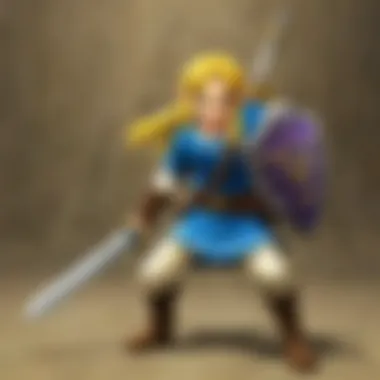
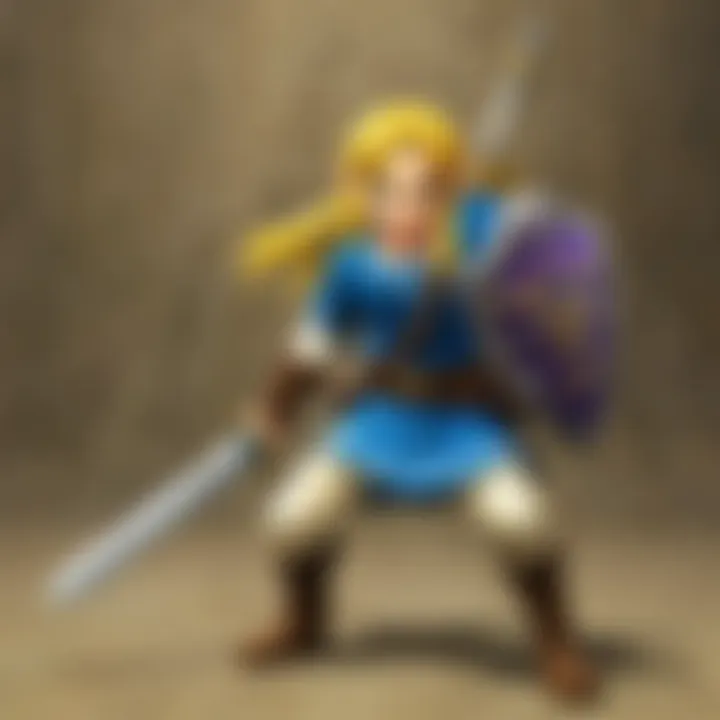
While the GameCube controller did not originally feature motion controls, games like The Legend of Zelda: Twilight Princess saw the introduction of these features later on the Wii console. However, pacing the discussion for the GameCube, the overall design of both titles included mechanics that relied heavily on precise control and timing.
In Four Swords Adventures, the cooperative gameplay demanded coordination among players to tackle challenges. This required a level of engagement that simulated the feel of motion controls. The necessity for strategic positioning and timing offered a dynamic, interactive experience akin to motion gameplay.
The GameCube era set the stage for future innovations in interactive gameplay. Enriching mechanics and enhancing user controls undoubtedly paved the way for the seamless incorporation of motion technologies that would emerge in subsequent systems.
These technical innovations underpin both the artistic vision and the immersive experience that characterize the Zelda games on the GameCube, reflecting a turning point for the series in the gaming landscape.
Cultural Impact of Zelda on GameCube
The Zelda series has played a significant role in shaping the landscape of video gaming, particularly during the GameCube era. The impact of titles like The Legend of Zelda: The Wind Waker and The Legend of Zelda: Four Swords Adventures extend beyond mere gameplay; they forge connections among communities, influence design choices in other games, and amplify the franchise's presence in popular culture.
Influence on Game Design Trends
Zelda on GameCube left an indelible mark on game design trends. Notably, The Wind Waker utilized cel-shaded graphics, representing a divergence from the realistic style seen in contemporary titles. This artistic choice resonated with many developers, encouraging them to experiment with a variety of art styles. The emphasis on open-world exploration and non-linear storytelling in The Wind Waker provided a framework that other developers observed and eventually incorporated into their games.
Additionally, Four Swords Adventures highlighted multiplayer functionality, which many designers viewed as a potential hook for engaging modern audiences. The introduction of cooperative gameplay mechanics not only enhanced fun but also redefined player interactions in local multiplayer settings. \nThese innovations guided subsequent games in the action-adventure genre, illustrating how Zelda's design principles can transcend specific titles and remain relevant.
Fan Reception and Community
The fan reception to the Zelda games on GameCube significantly shaped a diverse community. The Wind Waker, initially met with mixed reactions due to its stylistic departure, ultimately garnered a loyal following. Players connected over their experiences in Hyrule, sharing stories, artwork, and insights across platforms like Reddit and Facebook. The unique aesthetic and character design fostered a rich culture of fan art and discussions, indicating that visual presentation can evoke emotional responses.
Four Swords Adventures further nurtured community interactions by facilitating multiplayer experiences. Friends gathered, not only to solve puzzles together but also to bond over competitive gameplay. Events and meet-ups emerged, driven by a shared love for the series, enhancing player engagement and community spirit.
Merchandising and Spin-offs
Merchandising around the Zelda series expanded substantially due to its success on GameCube. Iconic symbols, characters, and themes found their way into various products ranging from action figures to clothing. This trend strengthened fan attachment and extended the Zelda brand beyond gaming.
Spin-offs also emerged, with some titles seeking to tap into the franchise's popularity. Games such as Hyrule Warriors, although not directly linked to the GameCube era, were reflections of how the franchise's legacy perpetuated new gaming experiences. These developments opened avenues for storytelling and gameplay mechanics in ways that reached broader audiences.
Overall, the cultural impact of Zelda on the GameCube era reverberates in both game design and community structure, ensuring its laughable authority in gaming history.
The Future of the Zelda Franchise
The ongoing evolution of the Zelda franchise remains a topic of great interest among fans and industry analysts alike. The legacy left by the GameCube titles, The Wind Waker and Four Swords Adventures, has significantly shaped the direction of future entries. Understanding what the future may hold involves reflecting on elements that have defined the series and considering how they can adapt to changing gaming landscapes. The franchise must balance nostalgia with innovation to engage both long-time fans and new players.
Lessons from the GameCube Era
The GameCube era holds crucial lessons that could inform future Zelda developments. Firstly, The Wind Waker demonstrated the power of artistic choices in game design. Its unique cel-shaded graphics initially drew criticism but later resulted in a beloved aesthetic that distinguishes it from other entries. The importance of visual identity cannot be overstated for future titles, as they compete in an increasingly crowded market of visually stunning games.
Secondly, Four Swords Adventures showcased multiplayer gameplay in a way that was engaging and memorable. The cooperative mechanics, although constrained by hardware limitations, highlighted the potential for shared experiences in the Zelda universe. With the rise of online gaming, there is an opportunity to explore more expansive multiplayer structures without diluting the essence of the solo adventure that the series is known for.
Lastly, the responsive narrative structure in these titles offers a valuable lesson. Both games created a narrative space that allowed players to feel deeply immersed in Hyrule's rich lore. Future developments should continue to harness this depth, focusing on storytelling that respects player choice while still yielding a cohesive narrative.
Anticipated Developments
Looking forward, certain developments seem highly anticipated by the Zelda community. The transition to more open-world environments is one possibility. While Breath of the Wild has set a new standard for exploration, it is likely that future titles will push this concept even further. This could involve deeper interactions with the environment and more complex character relationships than seen previously.
Additionally, technological advancements can enhance gameplay. The potential integration of augmented reality or virtual reality could revolutionize the series. Imagine navigating Hyrule using real-world gestures. Such technology could naturally reflect the physicality and animations that fans love. It is essential that any technological shifts respect the established core gameplay that fans have come to cherish.
Moreover, as storytelling continues to evolve in games, future entries in the Zelda series may incorporate more complex narratives. Digital storytelling that allows players to affect outcomes, akin to what has been explored in recent titles from other franchises, may become an appealing direction. This would encourage richer player experiences while maintaining the essence of the beloved franchise.
Ending
The conclusion of this article emphasizes the lasting significance of the Zelda franchise on the GameCube, particularly through its two prominent titles: The Legend of Zelda: The Wind Waker and The Legend of Zelda: Four Swords Adventures. This section synthesizes key themes discussed throughout the article, showcasing their contributions to gaming.
Summary of Key Points
The exploration revealed several critical points:
- The Wind Waker showcased a unique art style that distinguished it from previous entries. This innovative approach not only attracted attention but also engaged players in a fresh way.
- Four Swords Adventures excelled in multiplayer gameplay, offering a collaborative experience that offered both challenges and enjoyment.
- Technical facets such as graphics, sound, and control innovations have paved the way for future titles in the series. The GameCube was essential in experimenting with new ideas and mechanics.
- The cultural impact of Zelda on the GameCube era is notable, influencing both game design trends and fostering a dedicated fan community.
In summary, these games impacted the series and helped shape perceptions of console gaming. They highlighted how innovation and creativity lead to enduring appeal.
Final Thoughts on the Legacy of Zelda on GameCube
Reflecting on the legacy of Zelda on the GameCube, it is clear both The Wind Waker and Four Swords Adventures contributed significantly to the gaming landscape. They introduced concepts that resonated deeply with players, reinforcing the series' position in the industry. The attention to art, narrative depth, and community involvement marked a turning point for the series. This era stands as a testament to how Zelda continues to evolve while maintaining its core identity. The lessons learned from these games influence not just future Zelda titles but also the broader gaming community. Ultimately, the GameCube provided fertile ground for experimentation, and its impact will be felt for years to come.
"The legacy of Zelda on GameCube continues to inspire developers and gamers alike, reminding us of the power of creativity in gaming."
In closing, the significance of this period in the Zelda franchise serves as a reminder of the series' adaptability and its commitment to enriching player experience.







